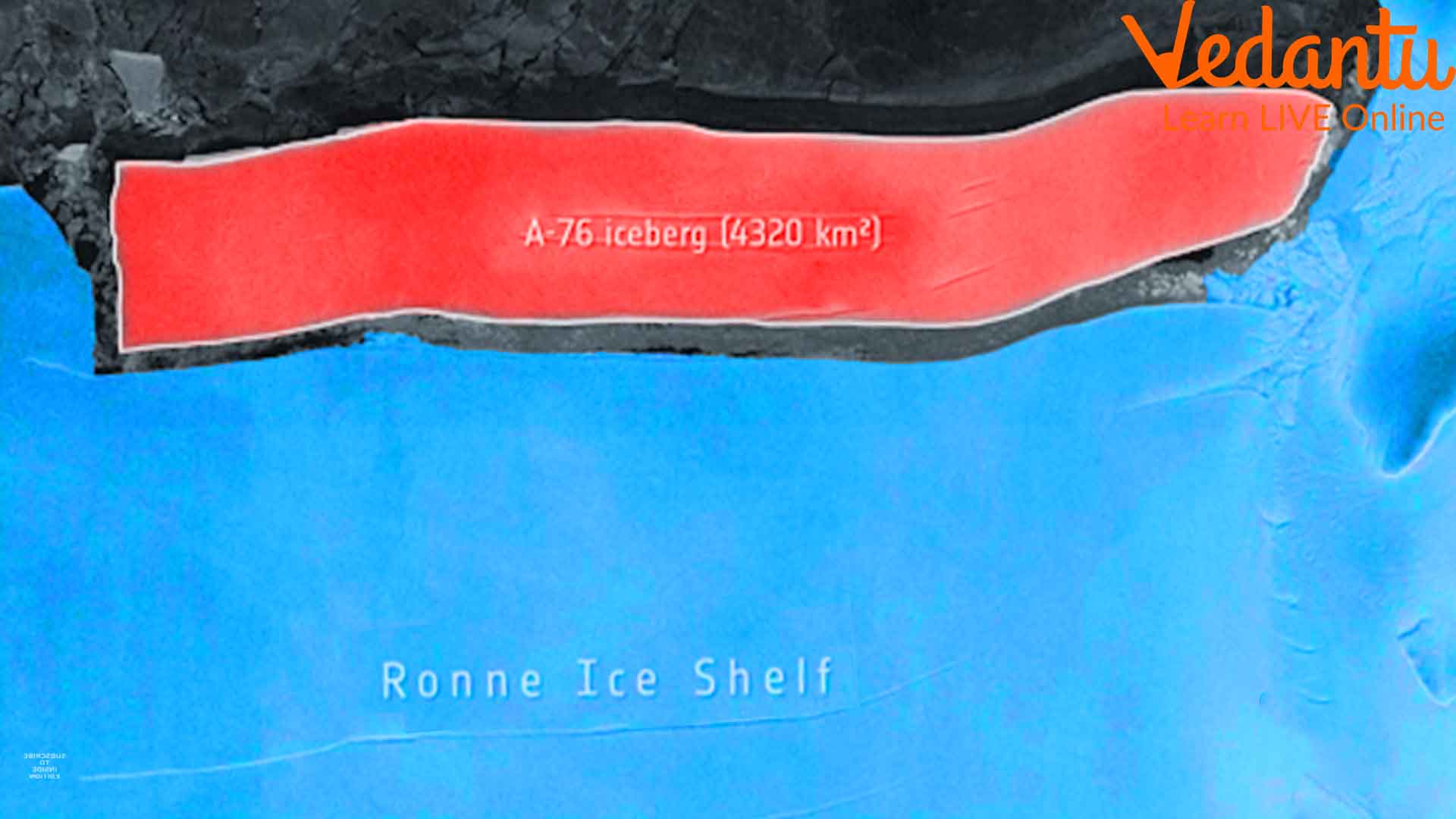Things You Should Know About the Antarctica Iceberg A76
Icebergs originated from the ice sheets in the Arctic and Antarctic regions. The famous ship Titanic sank when it hit an iceberg. How do these massive chunks of ice break from the sheets and float around in the sea? Which is the biggest iceberg in the world? Let us find out more about icebergs below.
It happened in the month of June 2022 when the world witnessed the shearing of the largest iceberg ever recorded. It was traced in the Weddell Sea in the Antarctic region. Due to its location, it has been named Iceberg A76 and it holds the record for the largest area. Let us read out what an iceberg is and how it forms.
What is an Iceberg?
The word ‘iceberg’ is the conglomeration of ice and berg. Berg means a mountain. Hence, a mountain of ice floating in the sea is called an iceberg. The term originates from the word ‘Ijsberg’. It is a Norwegian word that means a mountain of ice.
The icebergs are actually big chunks of ice breaking and freeing themselves from the glaciers and ice shelves. Once free from the main form, they start floating on the open water. We can find icebergs mainly in the higher latitudes in the Arctic and Antarctic regions. The biggest glacier in the world is Lambert Glacier in Antarctica. It is also one of the fastest moving glaciers and the origin of icebergs.
This phenomenon of breaking huge ice chunks leading to the formation of icebergs is called ice calving. The ice chunks break from the edges of glaciers and ice shelves. These chunks of ice have a lower density than salt water. This is why these icebergs float but a major part of them remains submerged in the water.
Icebergs are potentially dangerous for ships. They can damage ships and cause shipwrecks. One of the prime examples is the sinking of the famous ship, Titanic. The ships travelling in the North Atlantic and Antarctic waters face this threat all the time. Due to bad weather and low visibility, icebergs cannot be detected easily resulting in big accidents.
To avoid such issues, the United States of America and 12 other countries have formed the International Ice Patrol (IIP) to track the formation of icebergs using radar and satellite imaging technology. This organisation continuously watches the busy shipping lanes and routes.
Iceberg A76: The Mightiest of All
According to the US National Ice Centre, the biggest iceberg has been spotted in the Weddell Sea. This centre has used the imaging technology of Copernicus Sentinel 1 to track down the formation of the biggest ever recorded iceberg in the Antarctic region.
This iceberg has been named Iceberg A76. It is 170 km in length and 2 km in width. These dimensions contribute to a whopping area of 4320 square kilometres. You can say this iceberg is almost three times the area of Delhi, the capital city of India.
The previous record was held by Iceberg A23A. Its area was 3880 square kilometres. It is still floating in the Weddell Sea since it was tracked in 1986. We can conclude that the Weddell Sea is the biggest contributor to such humongous icebergs. Well, it is heavily packed with ice and causes immense obstructions to sea routes. One of the worst incidents shipwrecked endurance, the ship of Sir Ernest Shackleton in 1912.
The emergence of the biggest Antarctica iceberg has created a ruckus in the world as it shows how faster the permanent ice shelves are melting. Data suggest that the permafrost in the Antarctic region is melting very fast due to global warming and for many other reasons.

Satellite Image of Iceberg A76
How are These Icebergs Named?
As mentioned earlier, the US National Ice Centre monitors the formation of icebergs and the movement of the existing ones across the world. It records the iceberg break occurring in any location and monitors the movement of bergs that are bigger than 500 square metres.
This agency was established in accordance with multiple organisations in 1995 and is overseen by the United States Navy, the United States Coast Guard, and the National Oceanic Atmospheric Administration.
They use remote sensors installed in the polar-orbiting satellites for the analysis of icebergs. They also collect data to forecast the formation of ice and its conditions in the Great Lakes of North America, the Antarctic, the Arctic, and the Chesapeake Bay in the U.S..
The naming of these icebergs depends on their zone of origin. For instance, the largest iceberg breaks off Antarctica from Sector A. It means that the Antarctic region is divided into 4 sectors which are A, B, C, and D considering the longitudes.
Hence, the letter in an iceberg’s name is from the sector and the number comes from the running list. For example, another iceberg breaking off from the Weddell Sea will be named A77 after A76.
Alarming Difference in Ice Calving
From the above information related to iceberg A76, scientists and environmentalists are really worried about the alarming rate of melting of polar ice caps. Ice calving is a natural process but its pace and frequency are raising many questions.
The series of images captured by polar satellites shows how the ice caps are reducing in size. The sheets are melting faster, resulting in the weakening and breaking off of such huge icebergs. The glaciers retreated back to a huge distance showing how quickly the ice is melting.
Global warming is considered to be one of the main reasons behind the frequent calving of ice. The disintegration level of ice caps is making us worried. The constant depletion of ice caps and the rising sea level show how our ecosystem will be affected.
So, this is all about Iceberg A76, the largest recorded iceberg, and its naming process.







